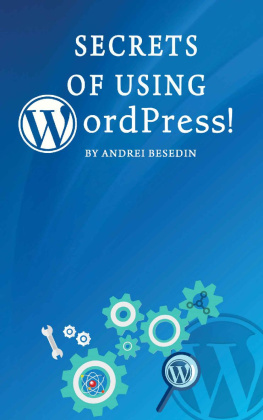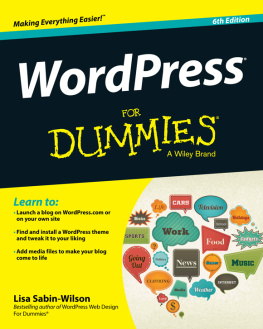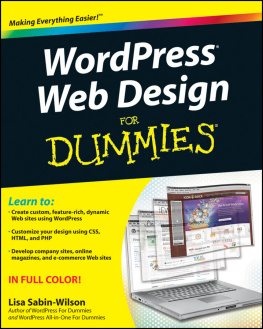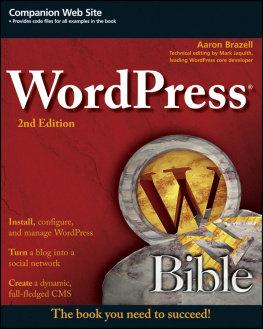
This edition first published 2013
2013 John Wiley & Sons, Ltd.
Registered office
John Wiley & Sons Ltd, The Atrium, Southern Gate, Chichester, West Sussex, PO19 8SQ, United Kingdom
For details of our global editorial offices, for customer services and for information about how to apply for permission to reuse the copyright material in this book please see our website at www.wiley.com.
The right of the author to be identified as the author of this work has been asserted in accordance with the Copyright, Designs and Patents Act 1988.
All rights reserved. No part of this publication may be reproduced, stored in a retrieval system, or transmitted, in any form or by any means, electronic, mechanical, photocopying, recording or otherwise, except as permitted by the UK Copyright, Designs and Patents Act 1988, without the prior permission of the publisher.
Wiley also publishes its books in a variety of electronic formats. Some content that appears in print may not be available in electronic books.
Designations used by companies to distinguish their products are often claimed as trademarks. All brand names and product names used in this book are trade names, service marks, trademarks or registered trademarks of their respective owners. The publisher is not associated with any product or vendor mentioned in this book. This publication is designed to provide accurate and authoritative information in regard to the subject matter covered. It is sold on the understanding that the publisher is not engaged in rendering professional services. If professional advice or other expert assistance is required, the services of a competent professional should be sought.
Trademarks: Wiley and the Wiley logo are trademarks or registered trademarks of John Wiley & Sons, Inc. and/ or its affiliates in the United States and/or other countries, and may not be used without written permission. WordPress is a registered trademark of WordPress Foundation. All other trademarks are the property of their respective owners. John Wiley & Sons, Ltd. is not associated with any product or vendor mentioned in the book.
A catalogue record for this book is available from the British Library.
ISBN 978-1-118-59719-4 (paperback); ISBN 978-1-118-59717-0 (ebook); 978-1-118-59718-7 (ebook); 978-1-118-59715-6 (ebook)
Set in 9.5 Myriad Pro by Wiley Indianapolis Composition Services
Printed in United States by Bind-Rite
Publisher's Acknowledgements
Some of the people who helped bring this book to market include the following:
Editorial and Production
VP Consumer and Technology Publishing Director: Michelle Leete
Associate DirectorBook Content Management: Martin Tribe
Associate Publisher: Chris Webb
Associate Commissioning Editor: Ellie Scott
Project Editor: Tom Dinse
Copy Editor: Luann Rouff
Technical Editor: Mike Little
Editorial Manager: Jodi Jensen
Senior Project Editor: Sara Shlaer
Editorial Assistant: Annie Sullivan
Marketing
Associate Marketing Director: Louise Breinholt
Marketing Manager: Lorna Mein
Senior Marketing Executive: Kate Parrett
Marketing Assistant: Tash Lee
Composition Services
Compositor: Jennifer Goldsmith
Proofreader: Wordsmith Editorial
Indexer: Potomac Indexing, LLC
About the Author
Rachel McCollin is a keen (if sometimes slow) cyclist, amateur photographer, and mother of two budding boy geeks.
She first discovered WordPress in 2010 when a client asked for a CMS to manage their site, and hasn't looked back since. She attended her first WordCamp a few months later and is now a regular fixture at WordCamp UK, having been declared the best speaker wearing red shoes in 2012.
She contributes to Smashing Magazine and wptutsplus and is the author of two WordPress-related Beginners Guides for Packt Publishing. She also runs Compass Design, a WordPress web development agency in Birmingham, UK.
About the Technical Editor
Mike Little is the co-founder of WordPress and founder and CEO of zed1.com ltd, a WordPress specialist web development consultancy.
He is a 100% WordPress specialist providing WordPress development, consultancy, training, and tech editing services.
He has developed many web sites for his clients including a number of UK government web sites and the award-winning I'm a Scientist, Get Me Out of Here (http://imascientist.org.uk) educational science engagement site. All in WordPress, of course. He is a long-term software developer (25+ years), with many programming languages, many disciplines, and many years under his belt, most at senior levels. He is a published author and technical editor.
He runs his local Manchester WordPress User Group, and serves on the WordCamp UK organising committee.
He lives with his family in Stockport, UK.
Acknowledgements
I'd like to thank all those in the WordPress community who have helped me develop my own use of WordPress, in particular the organizers of WordCamp UK, without whom I wouldn't have had the opportunity to meet many of the developers I'm now pleased to call friends.
I'd also like to thank Birgit Gruber (formerly of Wiley) for bringing me on board with this project, and Chris Webb, Tom Dinse, Luann Rouff, Sara Schlaer, and Ellie Scott for their professionalism and support. A huge thanks goes to Mike Little for his enthusiasm and feedbackhaving a co-founder of WordPress involved with this book is a pleasure and an honor. Members of my team at Compass Design provided feedback on the initial ideas for this book, inspired some of the content and contributed code used in the case studiesthanks to Mark Wilkinson, Tammie Lister, Scott Evans, and Nivi Morales.
My husband, Pete, spent many hours keeping two small boys calm while I disappeared to quiet rooms, libraries, or coffee shops to write, and I thank him for his continuing and unwavering support and patience.
Finally, I'd like to thank Jonny Allbut, whose input in planning this book made it much better than it would have been without himI hope we manage to work on another writing project together sometime.
Introduction
WordPress is the world's most popular content management system (CMS), and it continues to grow in popularity. There's an increasing trend for owners of websites of all descriptions to move to WordPress as their needs scale, along with their frustration with other customized or unintuitive CMSs that they may be using. As Matt Mullenweg said in 2012:
We might not always be the platform people start with, but we want to be what the best graduate to.
WordPress is now far more than a blogging platform. Enhancements such as custom post types and taxonomies, as well as improvements to the Dashboard such as the Menus screen added in version 3.0, and the new Media Manager enhancements in version 3.5, mean that developers can push WordPress further and users can quickly create beautiful, customized websites. If you're prepared to write custom functions and hook into the WordPress APIs, then there's very little you can't do.
WordPress is free and open source, with a large and dedicated community of users and developers, which is one of its strengths. It's also a platform on which you can build a career and a business. As a WordPress developer you may be considering setting up your own agency building WordPress-powered sites, or you may have already done this and want to take your skills to the next level so you can meet the needs of larger clients with more complex requirements.

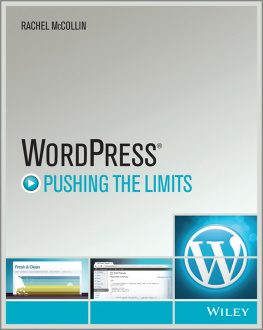
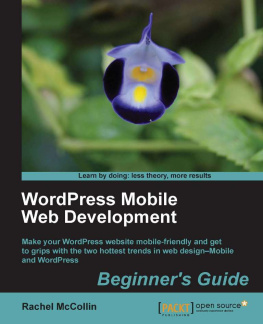
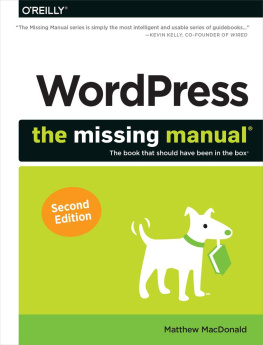
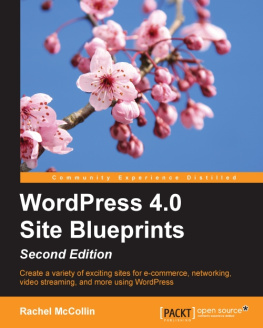
![Coleman Jason - Building Web Apps with WordPress [WordPress as an application framework]](/uploads/posts/book/171277/thumbs/coleman-jason-building-web-apps-with-wordpress.jpg)

